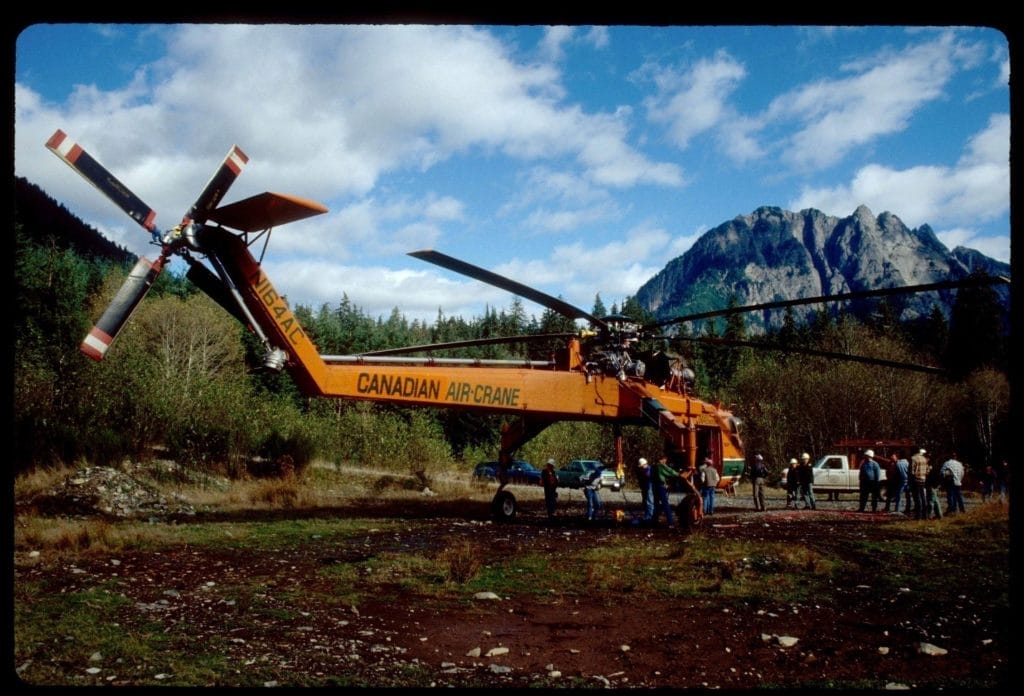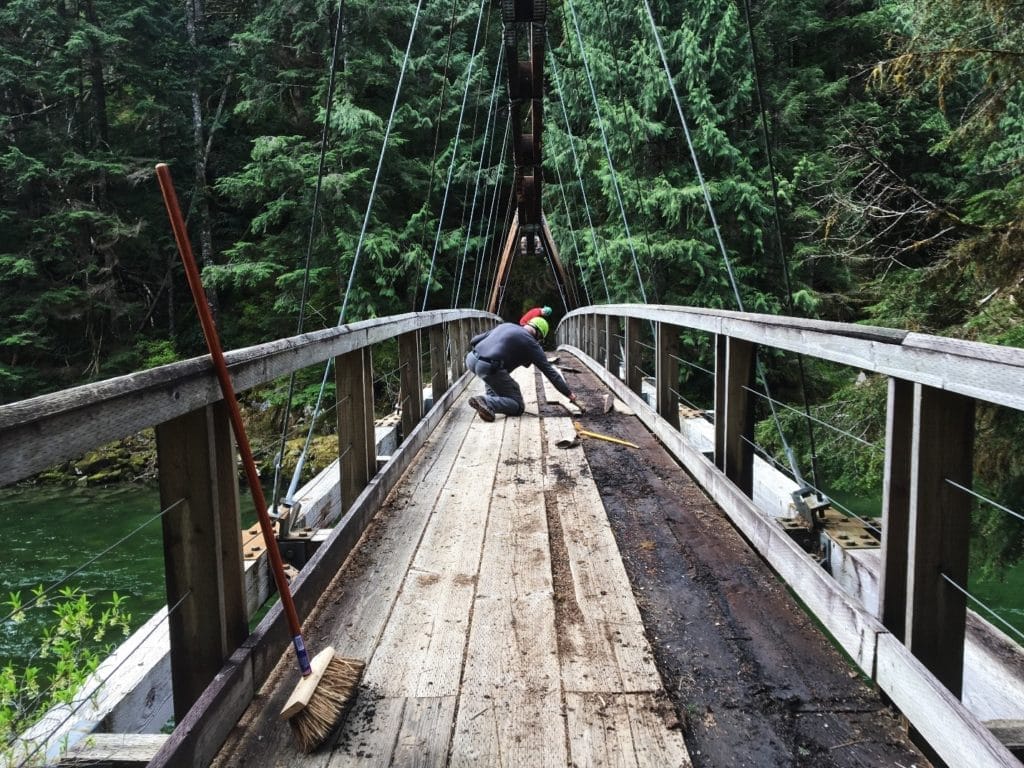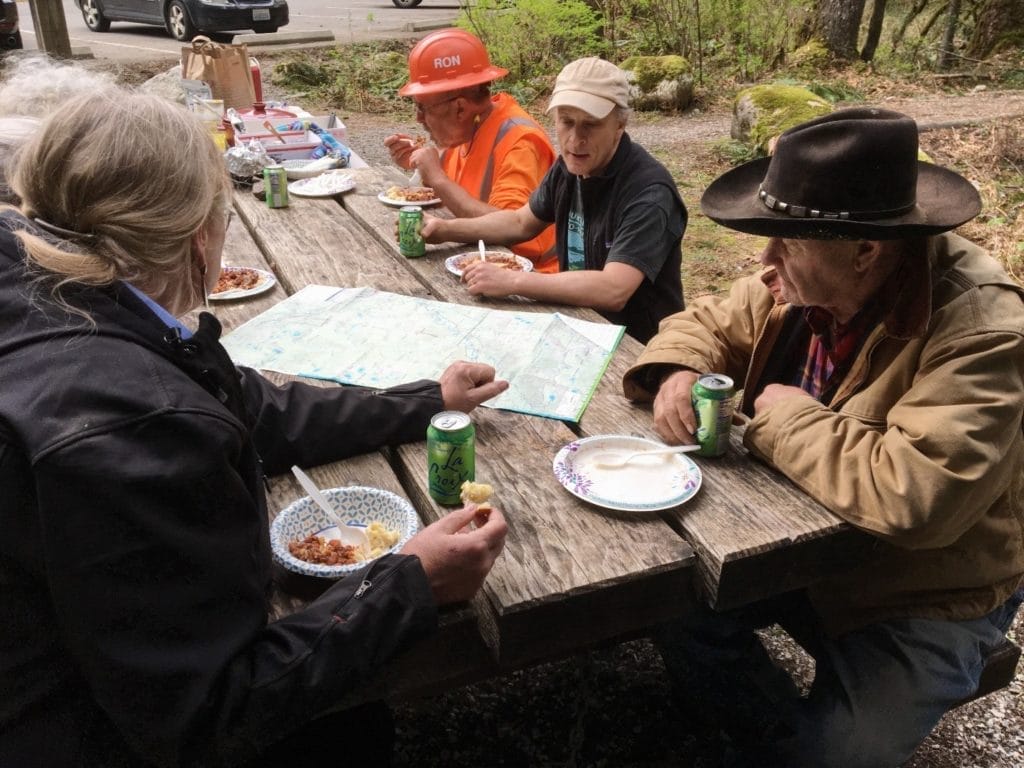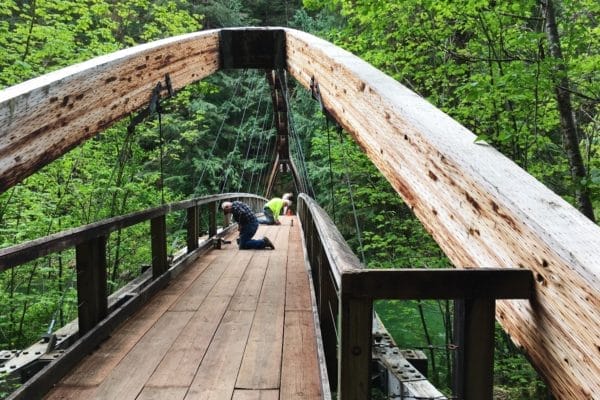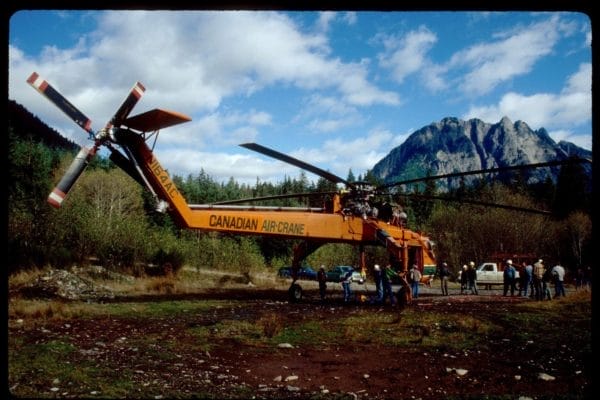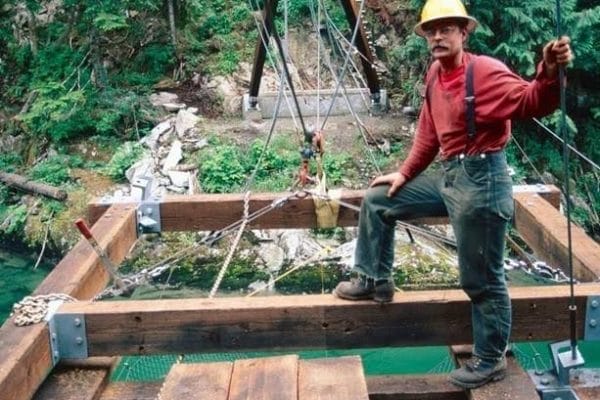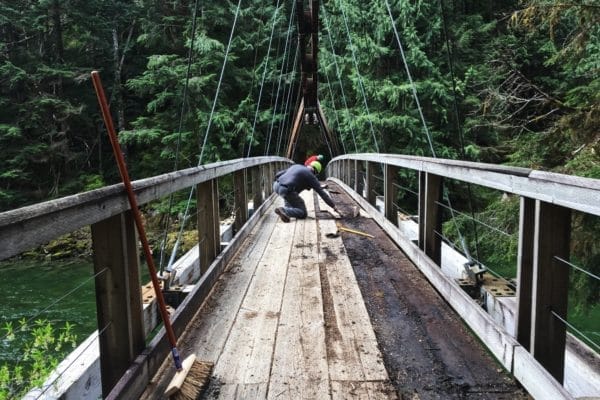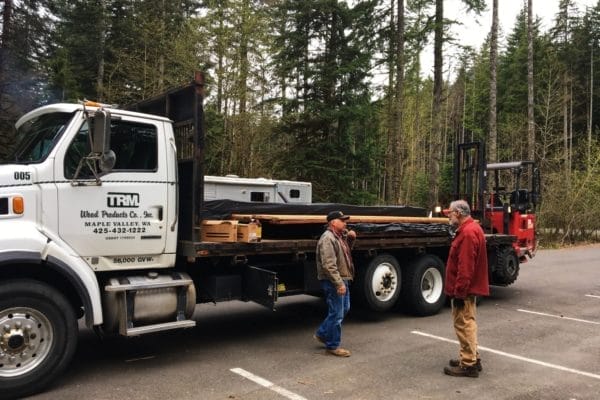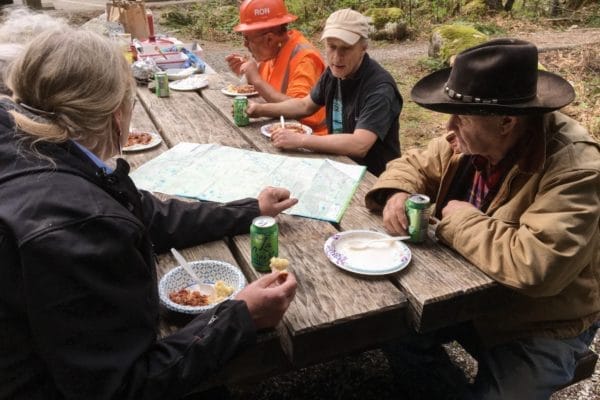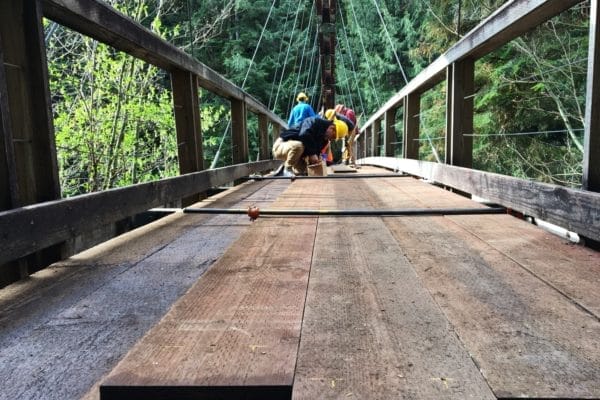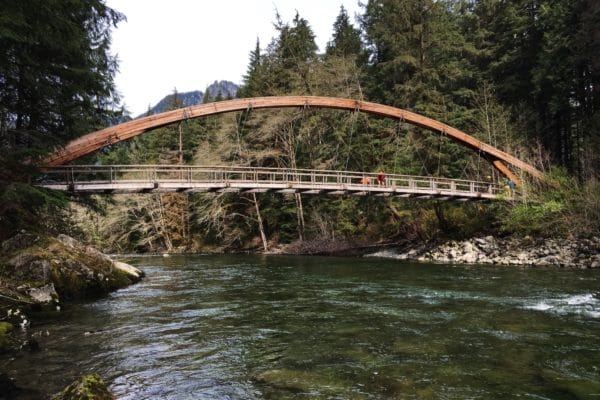The Gateway Bridge – A Continuation of a 25 Year Story
Looking back on the re-decking of the iconic Middle Fork Gateway Bridge, and how it came to be in the first place.
The Gateway Bridge – an iconic bridge over the Middle Fork of the Snoqualmie River – received a brand new, freshly-milled top-decking surface in April 2019. A necessary improvement made possible entirely through efforts of dedicated volunteers, non-profits, and government agencies, all working toward a common goal of improving our public lands.
Just as volunteers came together to re-deck the bridge, it was volunteers who kickstarted the original construction of this bridge in 1993. Prior to its construction, recreationists and foresters had to embark on a challenging journey to cross the roaring Middle Fork River, using small footbridges which were repeatedly washed away by the ebbs and flows of the river’s path through the valley. The unpredictability and complicated crossing impacted access to the Alpine Lakes Wilderness and upper reaches of the Middle Fork River.
In the early 1990s, local volunteers pushed for a formal bridge to be built to ensure a safe crossing. They recognized a lack of federal funding support for public lands and saw this as an opportunity to literally and figuratively build bridges, bring together diverse agencies, industries, and experts to construct the Gateway Bridge.
It was a project that took strategic planning, problem solving, and countless volunteer hours to complete. Volunteers worked with Jack Christiansen, a structural engineer primarily known for the design of the Seattle Kingdome, Washington State Convention Center, and World Trade Center, to create the designs for the new Gateway Bridge. His work was done entirely pro-bono, as he, along with several of the other dedicated volunteers to this project, had a deep love for hiking and the outdoors.
The cost of materials would have been another major hurdle to this project, and volunteers put their heads together to come up with a solution. Thanks to a generous donation of the arched beams from Weyerhaeuser Company, and the collaborative effort of all involved, the necessary materials were secured. In addition, the timber company allowed the initial assemblage of the beams to happen in their nearby North Bend lumber yard.
Soon, challenges arose. The assembly of a 150-foot-long suspension bridge with primary timber components weighing over 30,000 lbs. was no easy feat. The decision was made to pre-assemble the bridge into three main sections at a nearby staging area along the Taylor River. From there, a Sikorsky S64E helicopter from the Boise Interagency Fire Center flew the pieces into place over the river. Even with the assistance of the helicopter, difficult working conditions made it impossible to directly connect the final section of the bridge to the bridge footings. So, with jacks and wedges in hand, volunteers helped complete the final placement of the center section.
Once the structure was secured, the next step was to install the decking. Due to illegal camping and unsanctioned use of the Middle Fork Valley during those times, volunteers alternated nights camping out next to the decking lumber to prevent the valued construction materials from being vandalized or stolen. At last, with thousands of volunteer, US Forest Service (USFS) staff, and partner hours put into the bridge project, the structural component of the bridge structure was completed. The USFS installed the final decking planks and safety railings to finally finish the bridge in 1995.
The bridge quickly became an iconic landmark of the valley. Thousands of hikers, bikers, and equestrians crossed its span each year on their journeys deeper into the Middle Fork Valley. With all that use came wear and tear—the immense love for this bridge could be seen in the well-worn planks, which bowed and began to break over time.
A story not too unfamiliar began to unfold again in the Middle Fork Valley.
Volunteers from the Back Country Horsemen of Washington (BCHW) were some of the first to highlight the need to repair this well-used bridge. The broken, split, and cupped boards made for a dangerous bridge crossing for horses and mules, and created problems for hikers and bikers alike. This time, the BCHW teamed up with the Mountains to Sound Greenway Trust (Greenway Trust) to start brainstorming a solution, which would soon involve a local sawmill in Maple Valley, a week-long camp out, and a significant amount of volunteer collaboration and troubleshooting.
In October 2018, Joan Burlingame of the BCHW approached the Greenway Trust and the USFS regarding the potential resurfacing of the Gateway Bridge. With the common goal of improving public access to the Alpine Lakes Wilderness for all bridge users, volunteer groups and agencies joined forces once again.
Volunteers from the BCHW teamed up with a local timber company, TRM Wood Products Co, Inc., to mill the lumber and secure the hardware required for the bridge decking. TRM’s full support and enthusiasm to mill the wood at the low cost was solidified when Joan introduced the owner, a supporter of the outdoors and an equestrian himself, to the beauty of the Middle Fork. The Tahoma and Pierce County Chapters of the BCHW, along with other local equestrians, raised 100% of the funds to purchase the discounted materials to re-deck the bridge. When the materials were ready in April 2019, TRM trucked in the decking and hardware to the Middle Fork Trailhead. No helicopters were needed this time around.
Upon decking arrival, volunteers from the BCHW and the Greenway Trust, supported by long-time volunteers and community leaders from various organizations including the Department of Natural Resources, Issaquah Alps Trails Club, King County Executive Horse Council, Pacific Crest Trails Association, Si View Metropolitan Parks, Washington Trails Association, USFS, and others. They camped out for a week, rain and shine, beside the brand-new decking to ensure all materials were kept safe overnight in the Middle Fork. Stories of the original bridge installation were shared around camp dinners, as a few volunteers from the original construction 25 years prior were around to help in this re-decking project.
Over the course of one memorable week in April, these volunteers worked hours on end to troubleshoot removing the existing decking and laying the new decking. It was a giant puzzle, one that required expertise and teamwork to fit all the pieces together.
On April 26, 2019, 10 volunteers moved the final 16-foot decking into place. The bridge construction was, once again, led by volunteers working in partnership with USFS staff and nonprofit partners. Now the Gateway Bridge can continue to be the Gateway to the Alpine Lakes Wilderness that so many have come to know and love.
This bridge has become an attraction for recreationists new and old to the state of Washington. Though it offers a great backdrop to photos and a great start to a hike, the planks beneath the feet, paws and hooves that pass over tell an inspiring story – one of the immense power of volunteers.
From the Mountains to Sound Greenway Trust, many thanks to the volunteers who dedicated so much of their time to this project to make it a success.



